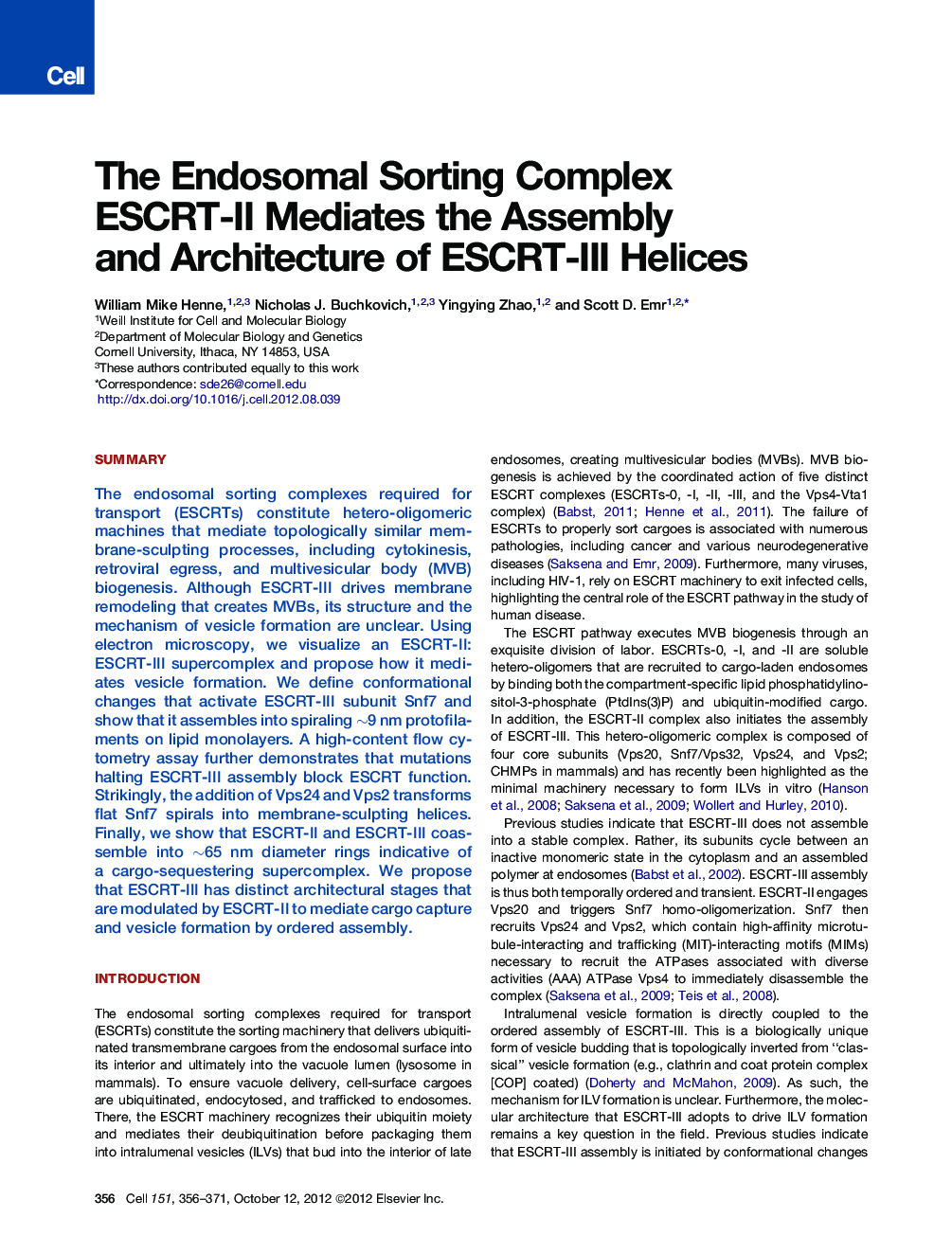| Article ID | Journal | Published Year | Pages | File Type |
|---|---|---|---|---|
| 2035597 | Cell | 2012 | 16 Pages |
SummaryThe endosomal sorting complexes required for transport (ESCRTs) constitute hetero-oligomeric machines that mediate topologically similar membrane-sculpting processes, including cytokinesis, retroviral egress, and multivesicular body (MVB) biogenesis. Although ESCRT-III drives membrane remodeling that creates MVBs, its structure and the mechanism of vesicle formation are unclear. Using electron microscopy, we visualize an ESCRT-II:ESCRT-III supercomplex and propose how it mediates vesicle formation. We define conformational changes that activate ESCRT-III subunit Snf7 and show that it assembles into spiraling ∼9 nm protofilaments on lipid monolayers. A high-content flow cytometry assay further demonstrates that mutations halting ESCRT-III assembly block ESCRT function. Strikingly, the addition of Vps24 and Vps2 transforms flat Snf7 spirals into membrane-sculpting helices. Finally, we show that ESCRT-II and ESCRT-III coassemble into ∼65 nm diameter rings indicative of a cargo-sequestering supercomplex. We propose that ESCRT-III has distinct architectural stages that are modulated by ESCRT-II to mediate cargo capture and vesicle formation by ordered assembly.
Graphical AbstractFigure optionsDownload full-size imageDownload high-quality image (254 K)Download as PowerPoint slideHighlights► ESCRTs mediate multivesicular body morphogenesis ► Point mutations within ESCRT-III subunit Snf7 promote conformational “opening” ► Snf7 forms spirals on lipid monolayers and helices when Vps24 and Vps2 are present ► ESCRT-II coordinates ESCRT-III assembly and promotes Snf7 ring formation
